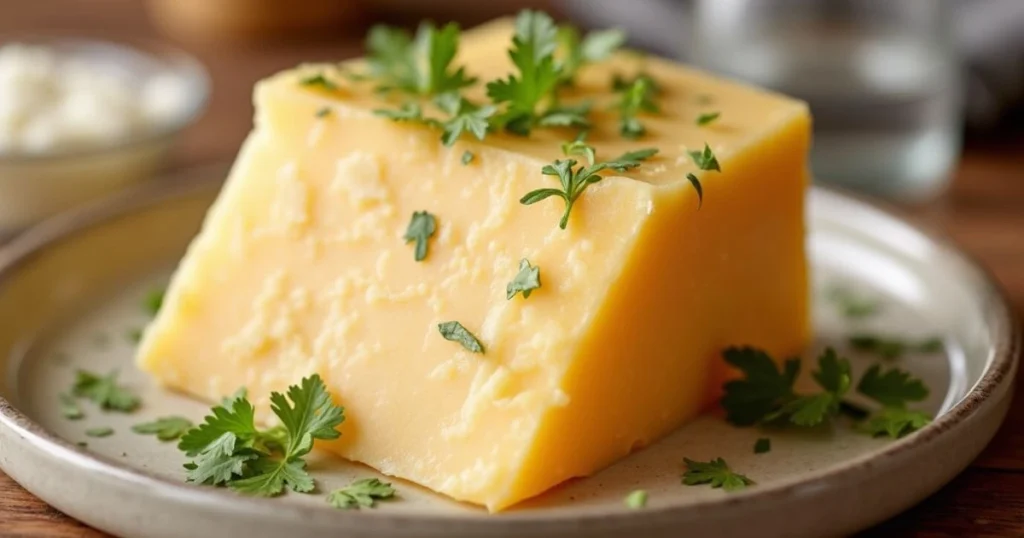Is Parmesan Cheese Gluten Free? Find Out Here
If you’re someone who has to avoid gluten, whether due to celiac disease, gluten sensitivity, or a preference for a gluten-free diet, it’s essential to be careful about what you eat. You likely know that certain foods are off-limits, but when it comes to cheese, there’s often confusion. Parmesan-cheese, a beloved and flavorful option, is one such food that raises questions. Is parmesan cheese gluten-free? In this article, we’ll explore everything you need to know about parmesan cheese, whether it’s safe for a gluten-free diet, and how to enjoy it without worry.
Table of Contents
What is Parmesan Cheese?
Before diving into the gluten-free question, let’s take a closer look at Parmesan cheese. Originating from Italy, Parmesan, also known as Parmigiano-Reggiano, is a hard, granular cheese that has been produced for centuries. Known for its rich, nutty flavor and crumbly texture, it’s a staple in many Italian dishes, such as pastas, risottos, and salads.
Traditional Parmesan is made from just a few simple ingredients:
- Milk (usually cow’s milk),
- Salt,
- Rennet (an enzyme used in cheese making),
- Bacterial cultures (to help the cheese mature).
Given this, Parmesan cheese seems to be a natural fit for those on a gluten-free diet. But, before assuming it’s safe, it’s important to consider the full picture, especially when it comes to processed cheeses and cross-contamination.
Is Parmesan Cheese Naturally Gluten-Free?
Here’s the good news: pure, unprocessed Parmesan-cheese is gluten-free. The main ingredients—milk, salt, and rennet—are naturally free of gluten. There is no wheat, barley, or rye in the basic ingredients, so if you’re eating authentic, unadulterated Parmesan, you don’t have to worry about gluten.
However, this doesn’t mean that every Parmesan-cheeseproduct you find is gluten-free. There are a few factors to consider, particularly with pre-grated cheeses and processed versions, where contamination might occur.
Gluten Sensitivity and Celiac Disease
For people who suffer from gluten sensitivity or celiac disease, it’s essential to be cautious. While pure parmesan cheese is safe, gluten can sneak into processed products. Cross-contamination during manufacturing or the addition of fillers like starches could be an issue.
Are All Types of Parmesan Cheese Gluten-Free?
You may be wondering whether all types of Parmesan are gluten-free, especially when it comes to pre-grated or packaged varieties. The answer is: it depends.
Freshly Grated vs. Pre-Grated Parmesan
- Freshly Grated Parmesan Cheese: If you’re grating parmesan cheese yourself from a block, you can be confident it’s gluten-free, assuming there’s no cross-contamination in your kitchen.
- Pre-Grated Parmesan Cheese: Many pre-grated Parmesan products contain additional ingredients, such as anti-caking agents and preservatives, to maintain the texture and shelf life. While these additives are generally safe, some of them might include ingredients derived from gluten sources. For instance, certain starches used to prevent clumping may be derived from wheat.
It’s important to read the labels carefully when buying pre-grated Parmesan. Look for the words “gluten-free” or a gluten-free certification to be sure.
Flavored and Processed Parmesan Products
There are also Parmesan-based products that may include flavoring or other additives. These products could contain gluten or be processed in facilities that handle gluten, increasing the risk of cross-contamination.
To be on the safe side, if you have a gluten sensitivity, it’s best to avoid these flavored or processed cheeses unless they are clearly labeled as gluten-free.
How to Make Your Own Gluten-Free Parmesan Cheese (Dairy & Dairy-Free Options)
If you’re looking for a completely gluten-free option that you can be sure of, making your own Parmesan cheese at home is a great solution. You have two options to suit your dietary needs: a dairy-free version or a traditional fermented dairy-based alternative. Both are easy to prepare and ensure that you avoid gluten contamination.
Dairy-Free Gluten-Free Parmesan (Cashew-Based Recipe)
This vegan and gluten-free alternative provides a Parmesan-like flavor and texture without any dairy. It’s perfect for those on dairy-free diets or anyone looking to create a completely plant-based meal.
Ingredients:
- 1 cup raw cashews
- 1/4 cup nutritional yeast
- 1 tsp garlic powder
- 1/2 tsp sea salt
Instructions:
- Combine all ingredients in a food processor.
- Blend until finely ground, resembling Parmesan cheese in texture.
- Store in an airtight container in the refrigerator for up to two weeks.
- Sprinkle on your favorite dishes for that savory, Parmesan-like flavor!
Fermented Dairy-Based Parmesan-Style Cheese (Gluten-Free)
For those who want the true taste of Parmesan but need a gluten-free version, this fermented dairy recipe is a great option. It involves a simple cheese-making process that yields a rich, hard cheese that you can grate just like traditional Parmesan.
Ingredients:
- 4 cups whole milk (preferably raw or organic)
- 1/4 rennet tablet (dissolved in 2 tbsp water)
- 1/4 cup live active yogurt or cultured buttermilk
- 1 tsp sea salt
- 1/2 tsp lipase powder (optional, for a stronger flavor)
Instructions:
- Heat the Milk: Warm the milk to 90°F (32°C) in a pot. Stir in the live active yogurt or buttermilk.
- Add Rennet: Pour in the dissolved rennet, stir gently, and let it sit for 30–40 minutes until curds form.
- Cut & Drain: Cut the curds into small pieces, then gently heat to 105°F (40°C) while stirring. Drain in cheesecloth.
- Press & Salt: Press the cheese under a weight for 12 hours, then rub it with salt.
- Age the Cheese: Store in a cool, ventilated area (50–55°F or 10–13°C) for at least 2 months, flipping every few days.
Once aged, this cheese develops a hard, crumbly texture similar to Parmesan, making it perfect for grating over pasta, salads, and more.

Pro Tips
1. Look for “Gluten-Free” Labels
The easiest way to ensure that the parmesan cheese you’re buying is safe is to look for products labeled as gluten-free. Many manufacturers who produce gluten-free products will include certifications to give you peace of mind. This is particularly important for pre-grated or processed versions.
2. Choose Whole Parmesan Blocks
When possible, opt for whole blocks of Parmesan-cheese and grate it yourself. This minimizes the risk of cross-contamination or additives being mixed in. If you buy pre-grated cheese, make sure to check the label to confirm it’s free of gluten.
3. Watch for Additives
Some pre-grated Parmesan cheeses may contain starches or other additives to prevent clumping. While these ingredients are generally safe, they may sometimes include wheat-based starches, which can introduce gluten. Always double-check the ingredients list if you’re uncertain.
4. Avoid Bulk Cheese from Non-Dedicated Facilities
If you’re buying bulk Parmesan-cheese from a deli or non-dedicated grocery store, ask about their gluten-free protocols. Some cheese shops might cross-contaminate products, especially if they sell both gluten-containing and gluten-free options in the same area.
Serving Suggestions
1.Classic Pasta Dishes
- Spaghetti Aglio e Olio: Sprinkle freshly grated gluten-free Parmesan over this simple pasta made with garlic, olive oil, and red pepper flakes.
- Gluten-Free Mac and Cheese: Use homemade or store-bought gluten-free macaroni, topped with melted dairy-free Parmesan or traditional gluten-free Parmesan, for a creamy, savory dish.
- Pesto Pasta: Mix Parmesan into pesto sauce for a rich, nutty flavor that complements gluten-free pasta perfectly.
2. Salads
- Caesar Salad: Top your gluten-free Caesar salad with shaved or grated Parmesan for added flavor. You can use dairy-free Parmesan for a vegan version.
- Caprese Salad: Pair fresh tomato and basil with slices of Parmesan for a delicious, simple salad.
- Kale Salad: Toss kale leaves with olive oil, lemon juice, salt, and freshly grated Parmesan for a nutrient-packed, flavorful side dish.
3. Grilled Vegetables
- Roasted Vegetables: Sprinkle Parmesan over roasted veggies like zucchini, cauliflower, or carrots to add richness and depth.
- Grilled Asparagus or Broccoli: Grate or shave Parmesan on top of grilled vegetables for a burst of flavor and texture.
4. Baked Dishes
- Gluten-Free Pizza: Use Parmesan as a topping on your gluten-free pizza. It pairs beautifully with tomato sauce, fresh basil, and mozzarella.
- Stuffed Mushrooms: Mix Parmesan with gluten-free breadcrumbs, garlic, and herbs, then stuff into mushroom caps for a savory appetizer.
- Gluten-Free Gratin: Top a cheesy potato or vegetable gratin with Parmesan for a crisp, golden crust.
5. Appetizers and Snacks
- Parmesan Crisps: Make homemade Parmesan crisps by baking small piles of grated Parmesan cheese until they are crispy and golden. These are perfect as a snack or appetizer.
- Cheese Platter: Add wedges of traditional Parmesan or small bowls of your homemade gluten-free Parmesan to a gluten-free cheese platter. Pair with gluten-free crackers, nuts, and fruits.
6. Soup Toppings
- Minestrone Soup: Add a generous sprinkle of Parmesan to a hot bowl of minestrone soup for a savory finish.
- Tomato Soup: Grated Parmesan goes wonderfully with creamy tomato soup, creating a rich, comforting flavor.
7. Bread Alternatives
- Gluten-Free Parmesan Breadsticks: Incorporate Parmesan into a gluten-free breadstick recipe for extra flavor and texture.
- Gluten-Free Parmesan Biscuits: Add Parmesan to gluten-free biscuit dough for a cheesy, crumbly treat.
8. Smoothies or Shakes (Dairy-Free Parmesan)
- Savory Smoothie: For a unique twist, blend dairy-free Parmesan into a savory smoothie with kale, avocado, and protein powder.
- Cheese Topping for Smoothie Bowls: For a bold twist, sprinkle dairy-free Parmesan on savory smoothie bowls for extra flavor and texture.
9. Egg Dishes
- Eggplant Parmesan: Layer gluten-free breaded eggplant with marinara sauce, mozzarella, and Parmesan, then bake for a delicious, gluten-free take on this Italian classic.
- Omelets & Scrambles: Stir Parmesan into scrambled eggs or sprinkle on top of an omelet for a rich, flavorful finish.
FAQ
Is all Parmesan cheese gluten-free?
Yes, pure Parmesan cheese made from milk, rennet, and salt is naturally gluten-free. However, check the label for pre-grated or processed products as they may contain gluten or additives.
2. Can I eat Parmesan cheese if I have celiac disease?
Pure, unprocessed Parmesan is safe for people with celiac disease. However, be cautious of cross-contamination or additives in pre-packaged cheeses.
3. Are pre-grated Parmesan cheeses gluten-free?
Pre-grated Parmesan can contain additives or starches that may contain gluten. Always check the packaging for a gluten-free label or certification.
4. Can I make Parmesan cheese at home to ensure it’s gluten-free?
Yes, making your own Parmesan-cheese at home with gluten-free ingredients is a great way to ensure it’s safe for your diet. Follow the simple recipe provided above.
Conclusion
In conclusion, if you’re following a gluten-free diet, you can generally enjoy Parmesan cheese with confidence. Pure, unprocessed Parmesan is gluten-free and safe for most people with gluten sensitivities or celiac disease. However, you need to be cautious when it comes to pre-grated, processed, or flavored Parmesan products, as they may contain gluten or be subject to cross-contamination.
To ensure the cheese you eat is safe, always check the labels for gluten-free certifications, avoid products with unnecessary additives, and consider grating fresh Parmesan at home. You can also try making your own gluten-free Parmesan using simple, wholesome ingredients.
Have you tried Parmesan in your gluten-free meals? We’d love to hear about your experiences! If you’ve found great gluten-free Parmesan options or faced any challenges, share your thoughts in the comments below!
Additionally, if you found this guide helpful, don’t forget to share it with your friends and family on social media so others can benefit too. For more tips on gluten-free living and delicious recipes, subscribe to our newsletter or follow us on social media. Let’s keep the conversation going and help each other make gluten-free choices easier and more enjoyable!
Have you given our recipe a try ?
There are no reviews yet. Be the first one to write one.
Last Updated on August 4, 2025 by Janelle
- The Best Homemade Cheeseburger Macaroni Recipe - November 1, 2025
- The Ultimate Tiramisu Cheesecake - October 18, 2025
- The Only Cottage Cheese Bread Guide You’ll Ever Need (4 Ways) - October 4, 2025

